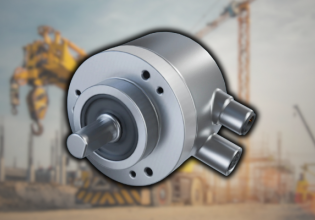Robots in Space? Remote Surgery and Extraterrestrial Habitation
An advanced robotic assistant has successfully demonstrated its surgical capabilities aboard the International Space Station. Researchers are also working to create robots that maintain human habitats in space.
A small robot (taking up no more space than the inside of a microwave) known as spaceMIRA has completed its first successful surgical demonstration in zero gravity. The robot—a creation of the startup, Virtual Incision—is housed in the International Space Station (ISS) and weighs only 0.9 kg. The small robotic arm performed a series of surgical maneuvers on simulated tissue (taking the form of a rubber band).

spaceMIRA was developed by Virtual Incision co-founder and Professor of Mechanical Engineering Shane Farritor and his students at the University of Nebraska-Lincoln. Image used courtesy of the University of Nebraska-Lincoln
Extraterrestrial Robotics
Advanced robotic machinery will be essential for assisting human space crews in maintaining and repairing vehicles, habitation modules, and other important technologies needed for sustaining human life on long-duration space missions. What happens if a crew member suffers a severe injury and needs medical attention? What if a remote-controlled surgical robot could help?
Miniaturized In Vivo Robotic Assistant (MIRA)
In January this year, spaceMIRA was transported to the ISS via the SpaceX Falcon 9 rocket. NASA provided grant funding through the Established Program to Stimulate Competitive Research (EPSCoR) to the MIRA team in 2022 to progress testing and advance technological development.
Co-founder and Chief Technology Officer at Virtual Incision, Professor Shane Farritor, explained that spaceMIRA uses two arms to operate as a human surgeon would on Earth: one arm with a gripping tool to grasp tissue for stability and the other to cut.
spaceMIRA reached the ISS in February of this year, where six surgical simulations were performed. Video used courtesy of the University of Nebraska-Lincoln
Surgeon Dr. Michael Jobst remotely operated spaceMIRA from 400 km away at Virtual Incision’s headquarters in Lincoln, Nebraska. He faced the challenges of operating in zero gravity and did so successfully with a split-second time delay (between sending a signal from the control room and it reaching the spaceMIRA bot on board the ISS).
Jobst—who has undertaken 15 surgeries on human patients with the terrestrial MIRA model—says that even a split-second time delay is significant in surgery when excessive bleeding can be a problem if swift action is not taken. Even with the time delay challenge, Jobst and fellow surgeons completed spaceMIRA testing.
From Repairing Astronauts to Space Habitats
Researchers at the Harvard John A. Paulson School of Engineering and Applied Sciences (SEAS), along with senior research fellow Justin Werfel, are developing robots that employ multifunctional tools to assist with repairing equipment and structures associated with deep space habitation.
The Resilient ExtraTerrestrial Habitats institute (RETHi) research team is also developing technology to this effect. RETHi is directed by Purdue University in collaboration with SEAS, the University of Texas, and the University of Connecticut.

Werfel and his team’s robot gripper demonstrating adaptable gripping behavior. Image used courtesy of Harvard John A. Paulson SEAS
Werfel and fellow collaborators detail the construction of a gripper with scissor links that allow it to modify its ability to grasp specific objects requiring a certain degree of pressure. This gripper provides three unique functions. The fingers stay short and firm in the first function, allowing for a secure hold on items. In the second function, the fingers develop a joint that enables the gripper to manipulate items in its grasp. Finally, two more joints are added in the final mode, allowing the fingers to gently adjust to items of different shapes and distribute pressure uniformly.
Along with MIRA and the SEAS gripper, robotics technologies are expanding the capabilities of what is possible concerning deep space habitation and medical care in space.






